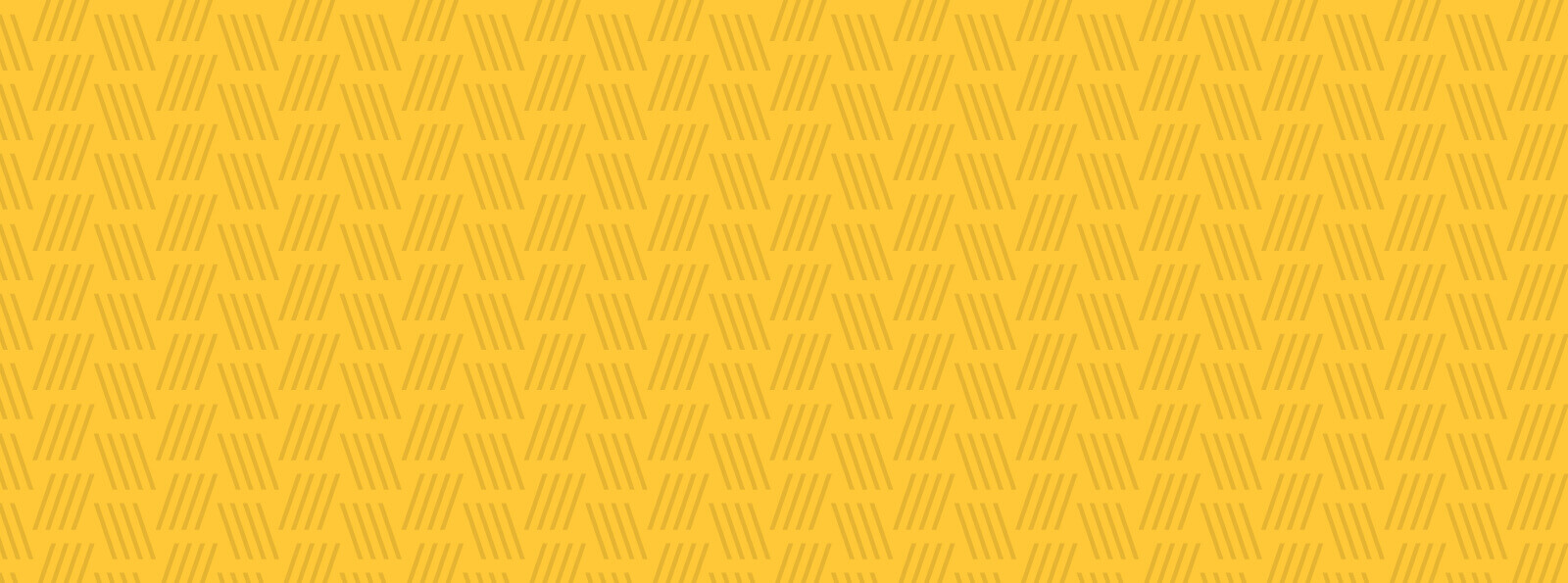About the Artist
Lynne Parks was born and raised in Northern Virginia and she has lived in Baltimore, MD since 2003. She has a BA from Hollins University with an independent major in creative writing/theater/film studies. Through found abstract photography she addresses facial difference. As Outreach Coordinator for Lights Out Baltimore, she raises awareness about avian conservation issues through her work as a practicing artist and curator. Lately, she has focused on the loss of birds from building collisions via photography, site-specific installation, and sound. She is a recipient of the 2013 Mary Sawyers Baker Prize.Artist's Statement
A fatal combination of light pollution and glass is killing as many as a billion birds each year in the United States. Throughout human history, birds have always been near to us. They’ve graced our culture with their color and beauty, their distinctive songs, their intricate behaviors, and, most significantly, the freedom of their flight. Icarus took to the skies, Leonardo da Vinci designed flying machines, and the Wright Brothers built a plane and stepped into it so that we could be like birds. Their qualities are pervasive as a symbol throughout our arts, political movements, religions, nations, and sports teams. Birds are emblematic of divination, peace, courage, skill, freedom, and rapacity. To Homer, birds were mediators between the gods and us. They remain representative of transcendent spirituality. We watch them because they instill wonder and instigate curiosity about their place and function in the world. With birds, our imagination literally takes flight. Bird populations are in decline due to habitat destruction, climate change, predatory cats, and violent collisions with manmade structures. The Audubon Society has warned that half of bird species could disappear from climate change. We have to help birds on multiple fronts. This work directly addresses the loss of bird life from building collisions. Light pollution attracts birds into manmade environments. A single carelessly designed building can kill thousands of birds during migratory seasons, but windows in the 123 million residences throughout the United States cause much of the carnage. By modifying our urban building designs and residential windows, we can greatly reduce collisions. We know that birds don’t strike windows for lack of intelligence; it’s just that the drastic human imprint on the natural world outpaces their ancient instincts for navigation. Unlike us, songbird vision is more laterally oriented. They see differently than we do. Some of the work is avian memorial photography which honors individual losses in the face of terrible statistics. These are large prints of small birds. Each of the portraits captures a bird in its death pose. Far from being macabre, their delicate beauty and bright colors captivate. Their narrative saddens, but challenges. Contrasted with the organic structure of the bird are lines of manufactured glass. They are marked by the elements that killed them, which indicates our inadvertent but harmful intrusion into nature’s pathways. The work raises questions about current building design and offers solutions. Sound pieces recapture the songs of the eighty-seven species of birds that are known to have died from Baltimore’s buildings. This is the future of birds in art: dying or absent. If we continue to live as we do, birds will no longer be symbols of freedom or grace, but absent symbols of human consumption.Featured Work
Photos


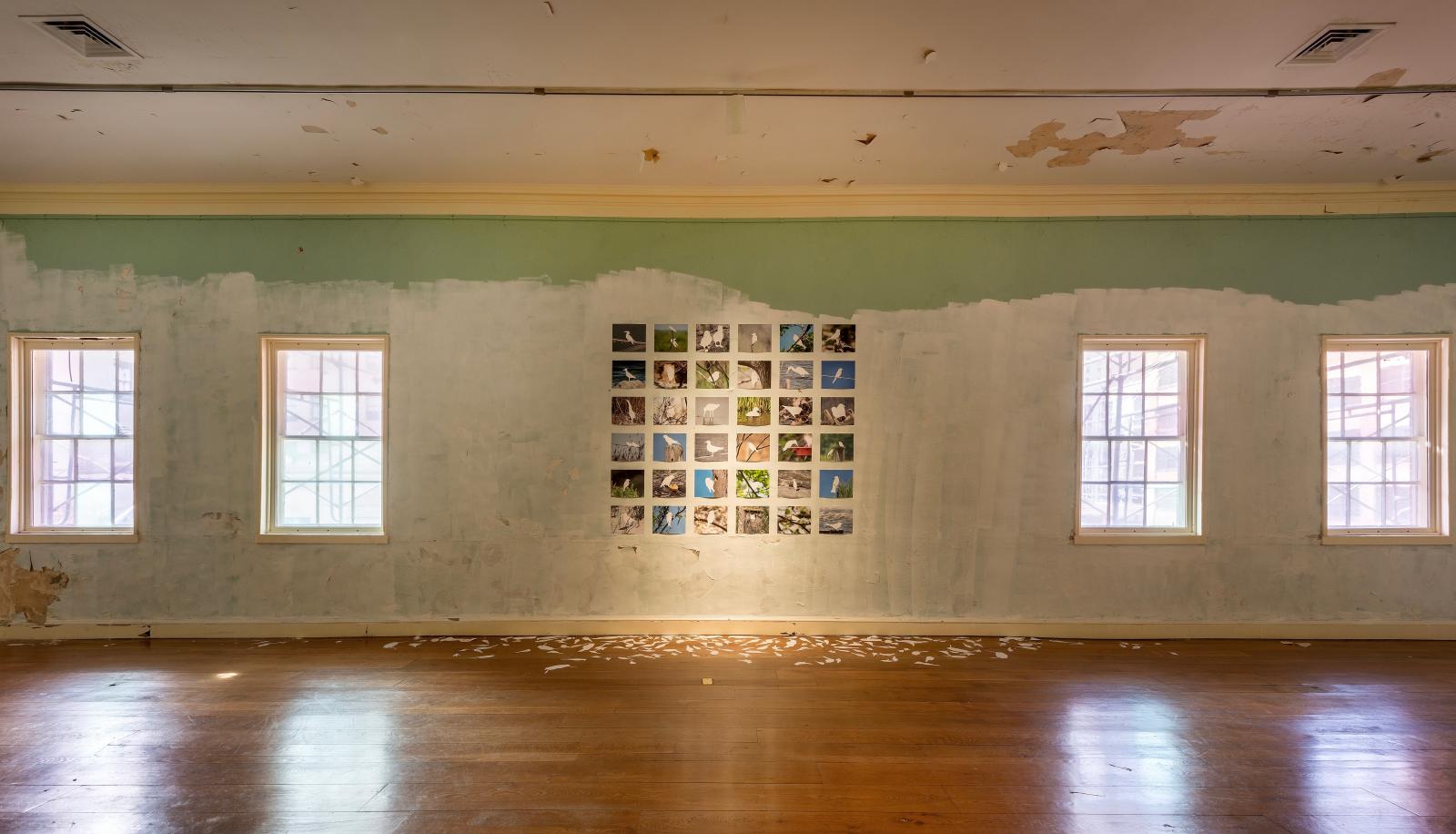
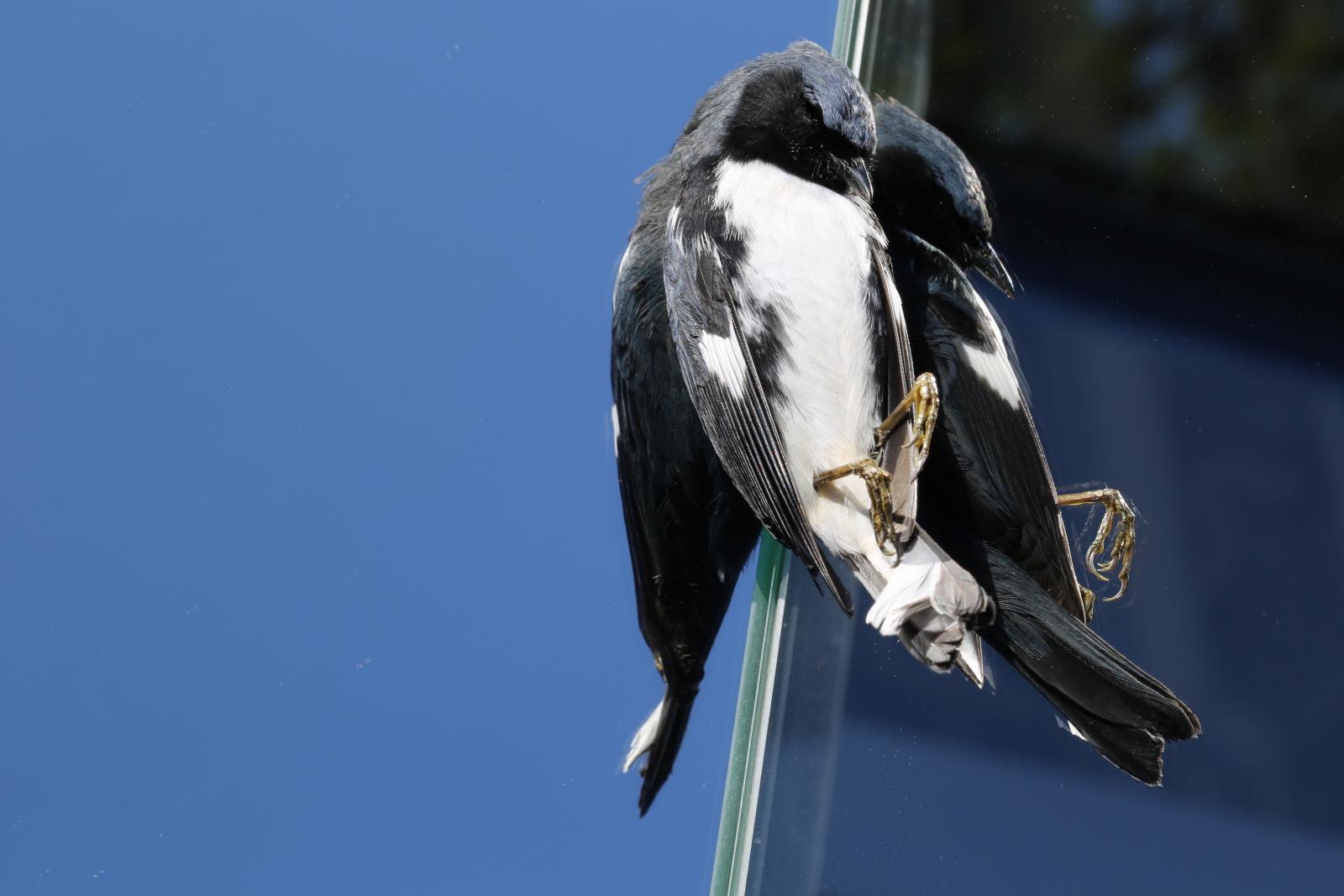
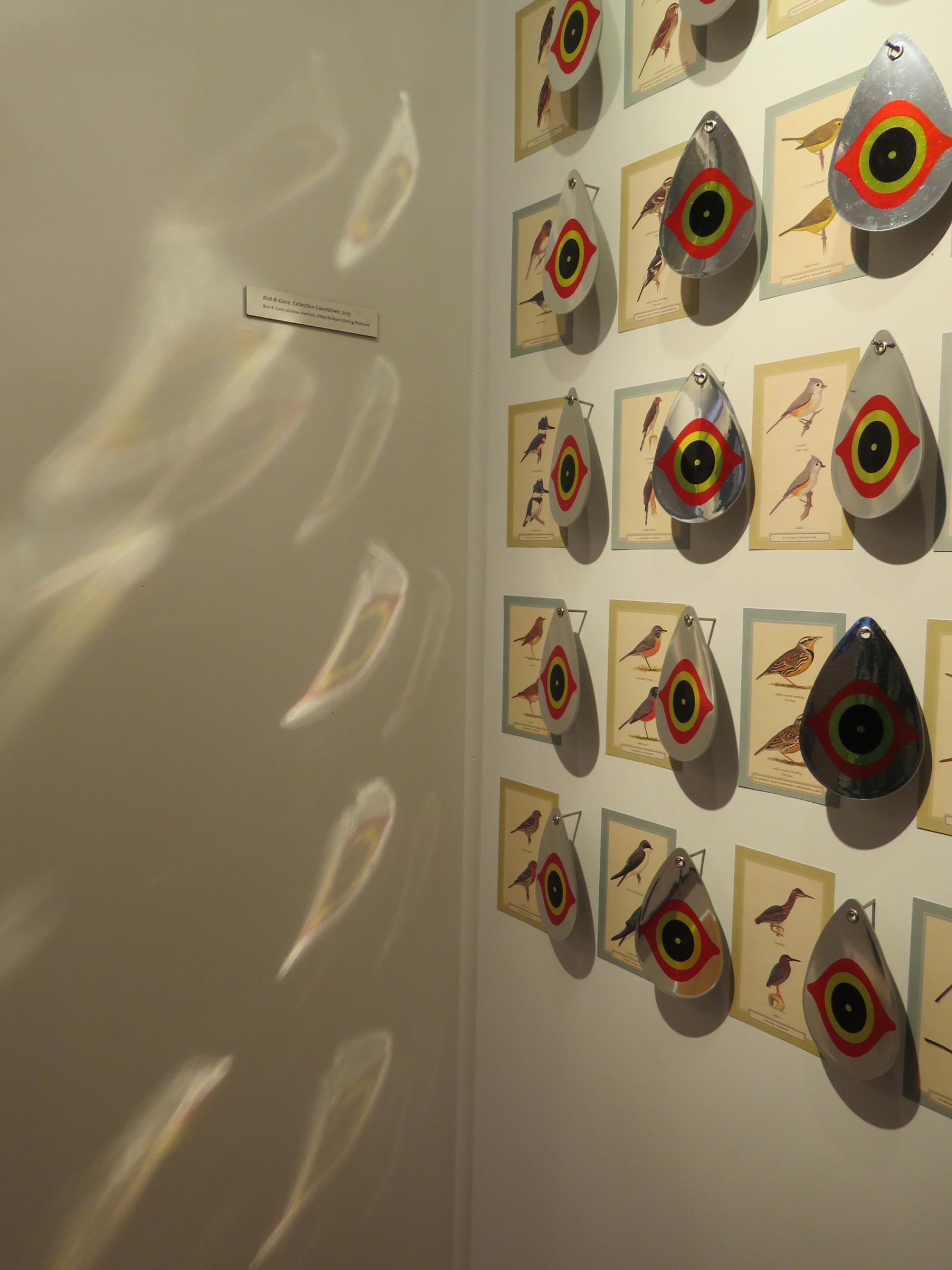
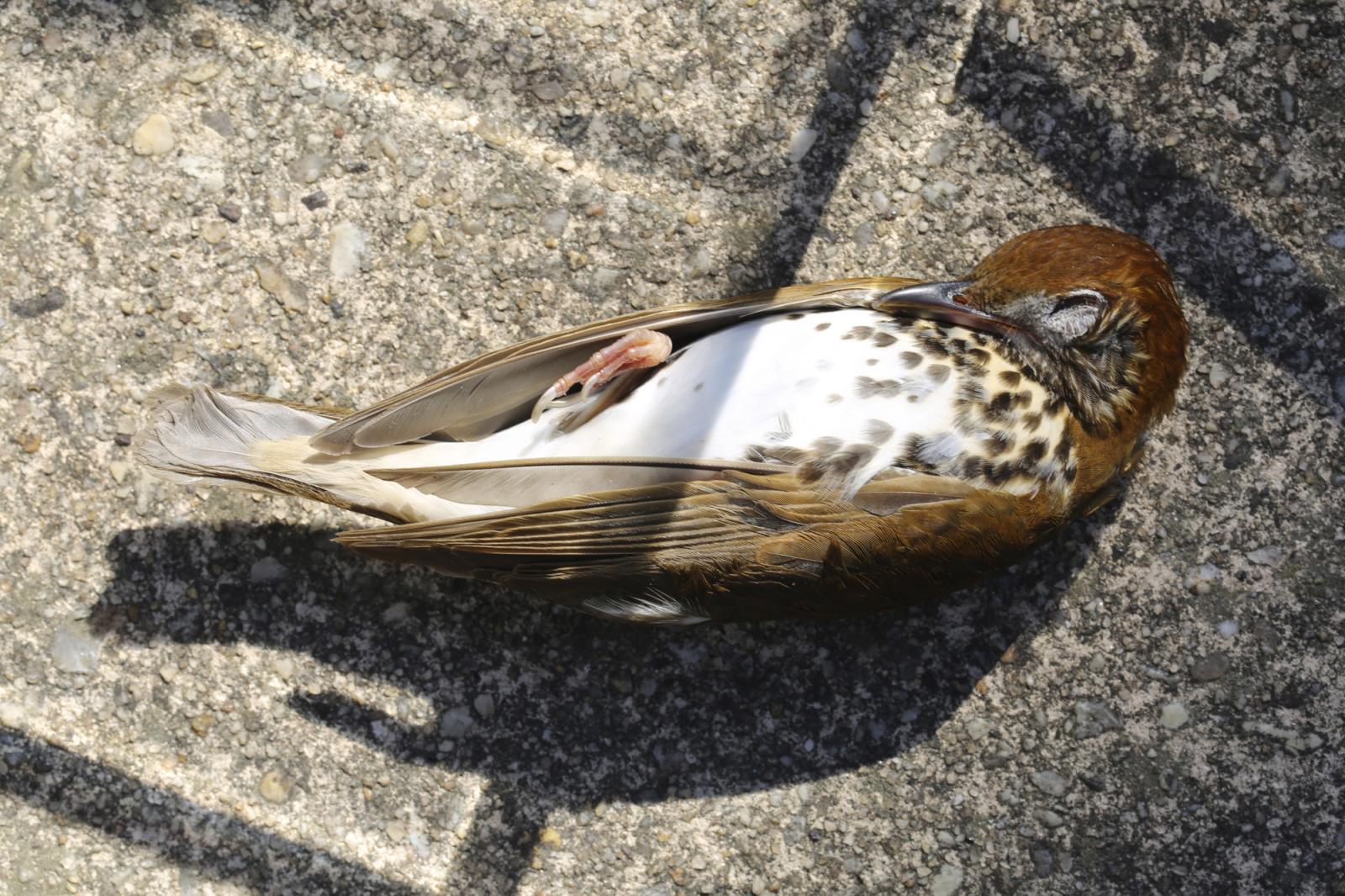
Featured Work: Photos
Death by Glass: Worm-eating Warbler
photography
2017
This worm-eating warbler was a window collision victim in downtown Baltimore. It was monitored and collected by Lights Out Baltimore, a bird conservation/wildlife rescue organization I volunteer with.
Bird-safe window film
window film
2017
These are design for bird-safe window film that I created for the visitor center at the Patuxent Wildlife Research Center.
Missing Birds
mixed media
2017
When I'm counting bird populations, I use photo documentation to verify my sightings. Every year, there are fewer birds. In this piece, I take the photos and photoshop out the birds. I list them by species. I add paper cut-outs strewn on the floor to amplify the absence. The birds are missing and I'm missing them.
Death by Glass: Black-throated Blue Warbler
photography
2017
As a volunteer with Lights Out Baltimore, I help monitor bird collisions in downtown Baltimore. A fatal combination of light pollution and glass is killing vast numbers of birds. This is a warbler fatality that we collected. I show the elements that killed it, reflective glass.
Bird-B-Gone: Extinction Countdown
mixed media
2015
This mixed media work combines Bird-B-Gone Diverters and Sibley Backyard Birding Postcards ironically. David Sibley's iconic images illustrate species found during Lights Out Baltimore monitoring as well as species whose habitats will be threatened by climate change.
Wood Thrush
archival pigment print
2015
This is a Wood Thrush collected from downtown Baltimore during the fall of 2014. Added to the composition are elements of light and glass typical of building design that kills birds.
